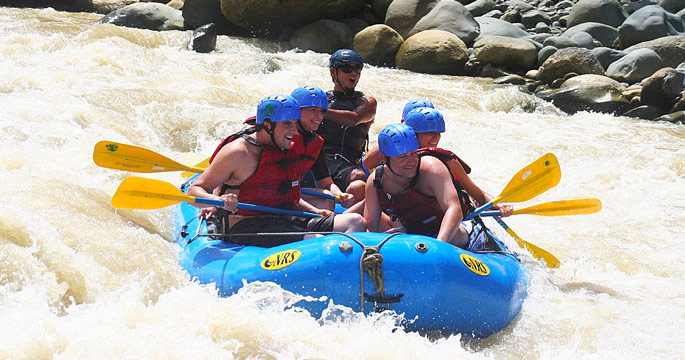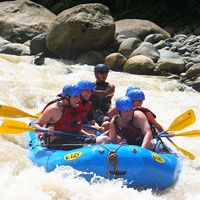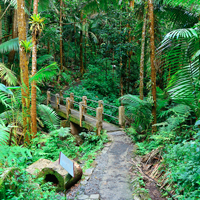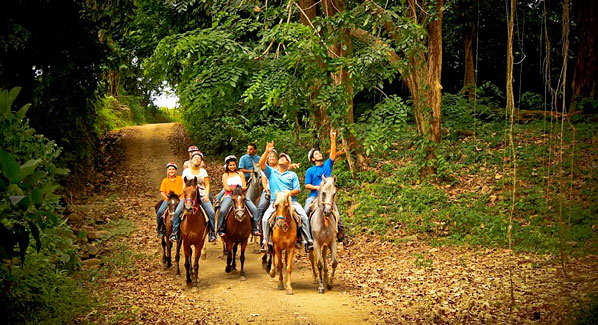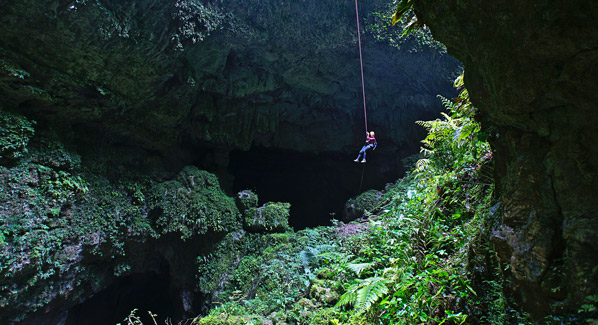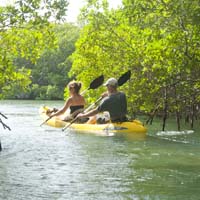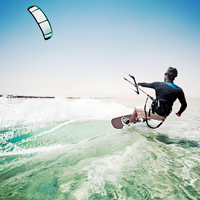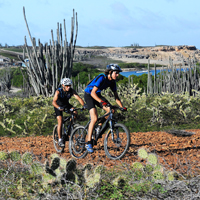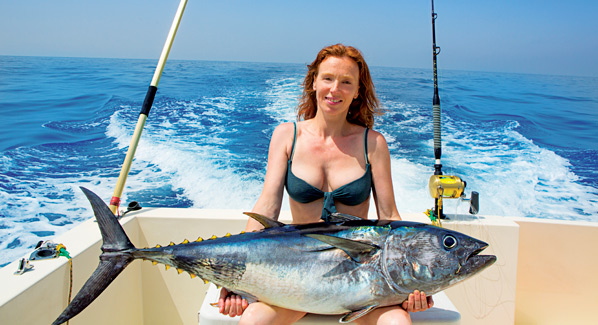There’s a reason why much of Costa Rica is covered in lush greenery. The towering peaks along the country’s central spine harvest rain, and lots of it. Portions of the highlands receive as much as 200 inches of rainfall each year, and all this water flows precipitously downhill to the sea. More than three quarters of the country’s electrical energy needs are met by harvesting this flow, but many rivers also run free, providing hundreds of miles of whitewater rapids that have become a major tourism draw. Choosing a river rafting adventure can be a matter of geography, as routes traverse all areas of the country. But the decisions should also be made based on physical abilities, personal experience and comfort level. There are trips suitable for young and old, timid and bold. Some are best planned during the rainy season (May to November), while others can be enjoyed year-round, thanks to timed water releases from the same reservoirs that provide hydroelectric power. To get you started on the right river trip, here’s an overview of what you can expect on some of Costa Rica’s best whitewater adventures.
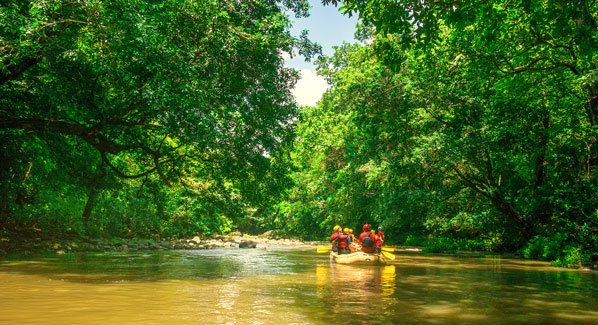
As rivers near the end of their downhill plunge from the mountains, many mellow out to provide rafters with calm drifts through scenic jungles. Photo: Roberto A. Sanchez/iStock
Fun Floats
As cascading mountain streams transition into lowland rivers, they mellow, and raucous whitewater turns to ripples and small standing waves that can be glided over with ease. Rafters call these class I and class II rapids, and they are appropriate for passengers of all ages and physical abilities. One of Costa Rica’s most popular excursions of this type is a float along the Corobicí River, in the country’s northwestern province of Guanacaste. The highlight of this trip isn’t big water, but wildlife, as the river flows through a rainforest where monkeys swing in the treetops and iguanas sun on the riverbanks. The Corobicí is just one of several relaxing and novice-friendly rafting trips on the roster. The nearby Tempisque River offers an even more sedate drift through lowland jungles, while the Peñas Blancas River gives access to hot springs and waterfalls, with some sections of calm, clear water and others that ratchet the action up a bit with exposed rocks and hints of white water. Closer to San Jose, a good option for an easy rafting trip is the Pejibaye River, which flows through the lush Turrialba Valley. Float tours here often include a picnic lunch along the riverbank, with time for swimming and playing among the small rapids in inner tubes.
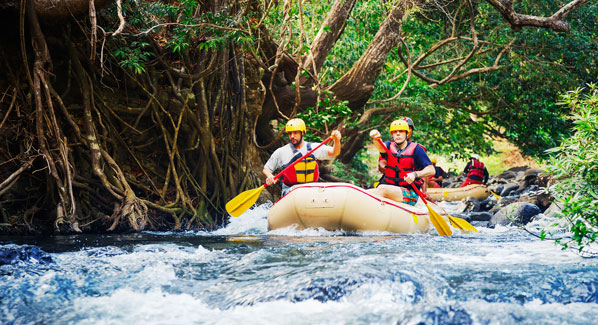
Costa Rica’s whitewater rafting doesn’t have to be dangerous to be exciting. Smaller rapids provide forgiving obstacles mixed in with enough splashes to keep things exciting. Photo: Roberto A. Sanchez/iStock
Thrill Rides
It’s possible to enjoy an exhilarating whitewater ride without being in any real danger. These adventures can include roller-coastering through standing waves, bumping off foam-drenched rocks and shooting through flumes that drop into swirling eddies. The guidebooks call it class III river running, and Coast Rica has a number of streams that deliver this level of aquatic thrill. One of the most popular is the Reventazón. This river spills from the heights of the Cordillera de Talamanca Mountains in southeastern Costa Rica, which are home to some of the wettest areas in Central America. From elevations of almost a mile, the river plunges towards the Caribbean, offering up nearly 60 miles of rapids that range from beginner-friendly to expert-only. The 10-mile stretch known as the Florida section provides consistent class III rapids that come in quick succession, creating an energy- packed thrill ride that is safe for adventurous first-timers, but will also hold the attention of rafting veterans. Also delivering plenty of splashes and plunges are the Sarapiquí River, some 30 miles northeast of San Jose, the Savegre, which flows to the Pacific just south of Quepos, and the middle section of the Balsa River, where cool waters released from a reservoir in the Arenal volcanic highlands provide consistent flows that sweep rafters though forests of orange-flowering poro trees.
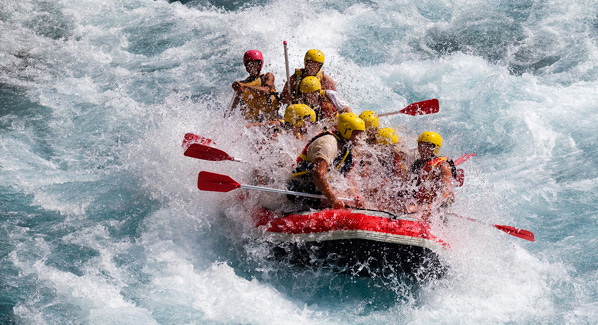
Avid whitewater fans looking for a serious challenge can find it on a number of Costa Rica’s high-energy whitewater rivers. The most extreme are suitable for experts only. Photo: iStock
Adrenaline Trips
Plunging over head-high waterfalls, bursting through tall standing waves with curling crests, and executing precise paddling maneuvers through boulder mazes that are unforgiving of mistakes are what make class IV whitewater rafting so daring. It’s not for the timid. Costa Rica has more than a half dozen rivers that deliver this level of adrenaline-filled action. One can get a taste of bigger water, along with a heady dose of scenery, on the country’s most popular and widely-celebrated river, the Pacuare. Though some lower sections of this 60-mile waterway are suitable for novices, the route through the Huacas River Gorge delivers pulse-quickening class IV rapids, and the upper river edges into expert-only territory. Whether mild or wild, the Pacuare is also noted for its scenic beauty, which includes towering canyon walls and the lush shoreside groves of a forest reserve. Those wanting to take in a larger section of the river can opt for two-day trips with overnight stays in a jungle lodge. The Pacuare is far from the only river in Costa Rica that delivers big-water thrills. Near Quepos, the powerful Naranjo sweeps through tight canyons as it tumbles to the sea. The hard-charging El Rio Toro lives up to its name (The Bull) with big waves and non-stop whitewater action, and the upper sections of the Tenorio River provide advanced-level challenges that are fast and powerful. Those with three days to spare and the willingness to camp out can tackle El General, a wild river that runs through some of the country’s most remote terrain.

